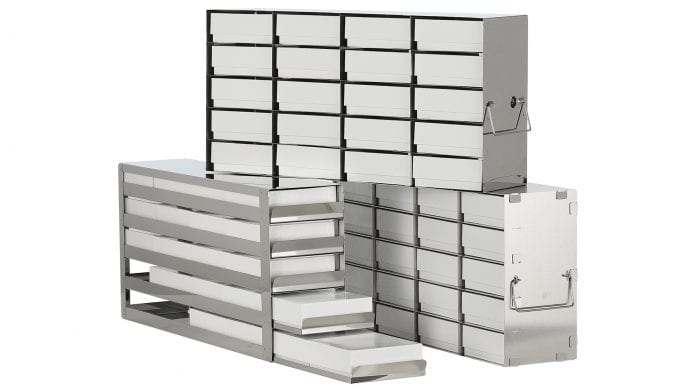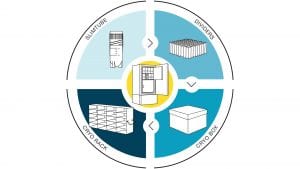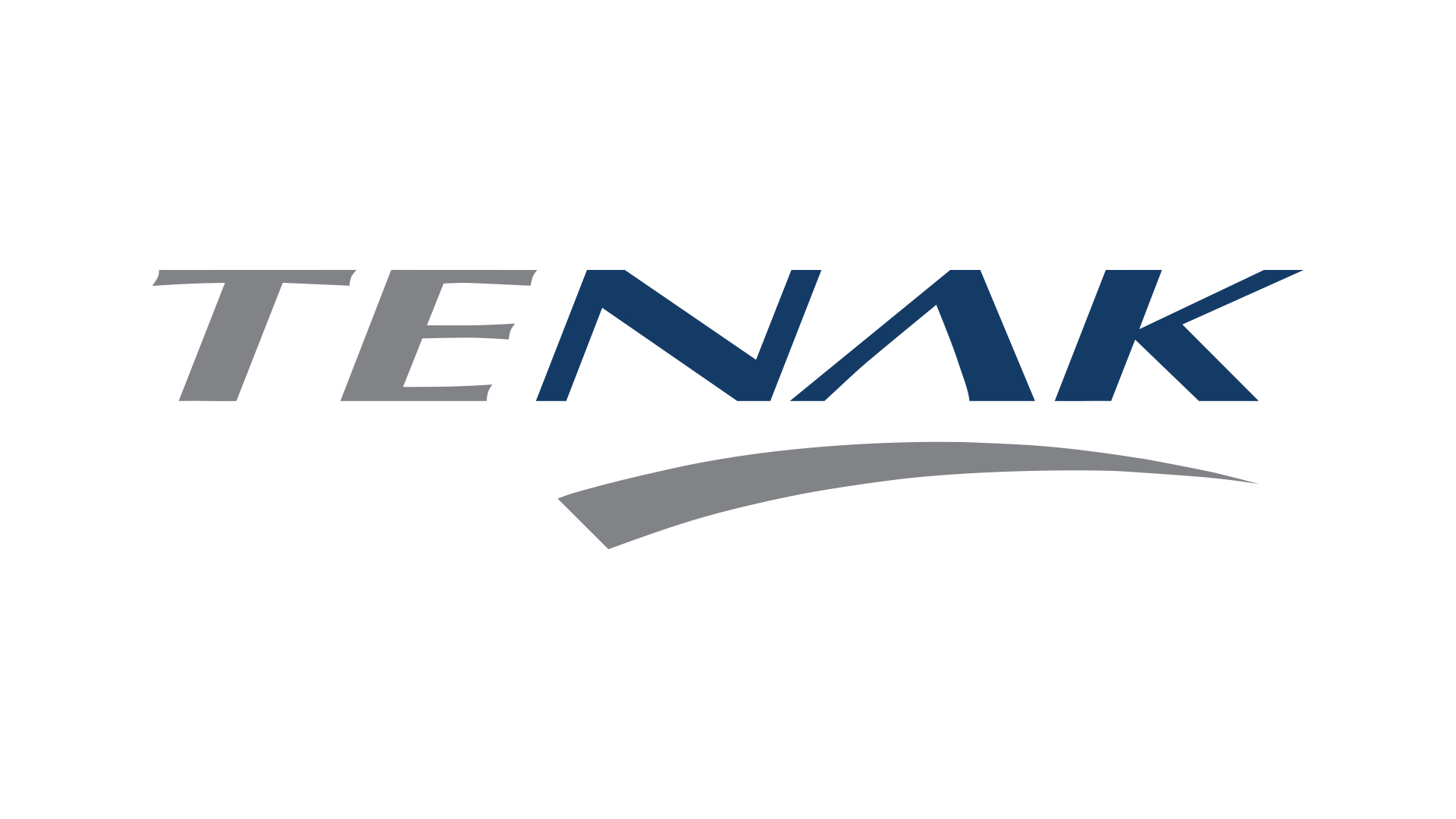
Sample storage solutions supplier TENAK delivers optimum cryo-storage for the global market.
Storing samples at ultra-low temperatures is not always as straightforward as you might think. When it becomes apparent that a facility is in need of more cryo-storage capacity, the process usually begins with assessing the available funds to determine the cost ceiling for a new freezer. At this stage, the facility’s focus will naturally be on the freezer and its specifications. Eventually when the freezer arrives, the user will need a racking system to store their samples. This often raises a lot of unforeseen questions; and it can be quite difficult to find a solution that will work with the samples, the specific freezer model and the user’s needs.
At TENAK we urge users to try to think differently when considering expanding their freezer capacity. Instead of starting with the freezer, the user should start from the inside with the sample: cryotubes, microscope slides, microtiter plates and other laboratory sample equipment all have distinct physical dimensions. It might be a good idea to reconsider the cryotube or plate which is being used – in some cases it may be better to choose a smaller cryotube or plate. Once this has been defined and the user has decided how many samples have to be stored, we can define the complete cryo-storage solution, including which freezer that would fit the purpose. This decision will be based on the dimensions of the samples and the user’s individual needs, as well as whether the freezer is to be deployed for long-term storage or daily use.
At TENAK we have developed a broad range of cryo-storage racks to fit into any ultra-low temperature freezer currently available on the world market, and for any type of use. We have analysed all freezer models in order to develop a rack reference guide, which is available on our website. This unique guide, which can be found on TENAK’s website, showcases essentially any rack combination for any freezer to store cryotubes, microscope slides, microtiter plates, centrifuge tubes and odd-sized samples; and is the best tool to define the optimal storage solution for your new and existing freezers.

We have different rack designs to meet various requirements: for example, if the samples have to be stored for a long period of time without the need for access, the user may prefer to select an inexpensive rack model. On the other hand, if there is a need to access samples or racks on a daily basis, it may be preferable to choose a comfort rack, which is much more convenient for the user.
In some instances, a standard solution is not sufficient for the specified sample or application. In these cases, we develop custom-designed systems in order to meet the requirements. Based on our experience, questions and information from the end user, we make a suggestion for what we see as the best possible solution. The dialogue goes back and forth with the user until we have the right solution: it is important to facilitate this dialogue as, from experience, we know that it is what makes the difference in solving the problem for the user.
Particularly in terms of storing samples in LN2 freezers, we are met with many customer-specific requirements. These cryogenic freezers are not standardised in the same way as mechanical freezers for -86°C. The internal dimensions vary from manufacturer to manufacturer, and the working practices within laboratories are often very different from place to place. Our experienced product designers will always do their upmost to find the best possible solution to any storage need and requirements.
All our cryo-storage racks are manufactured in our factory close to Copenhagen, Denmark. In recent years we have invested heavily in new technology and machines and refined our methods in order to continue to be a leader within our field. Our latest investment is a Laserwelding robot from the German machine producer Trumpf; with this state-of-the-art technology we are able to produce new, amazing products. We manufacture our racks in 304 stainless steel and high-end aluminium.
This article is from issue 17 of Health Europa. Click here to get your free subscription today.










